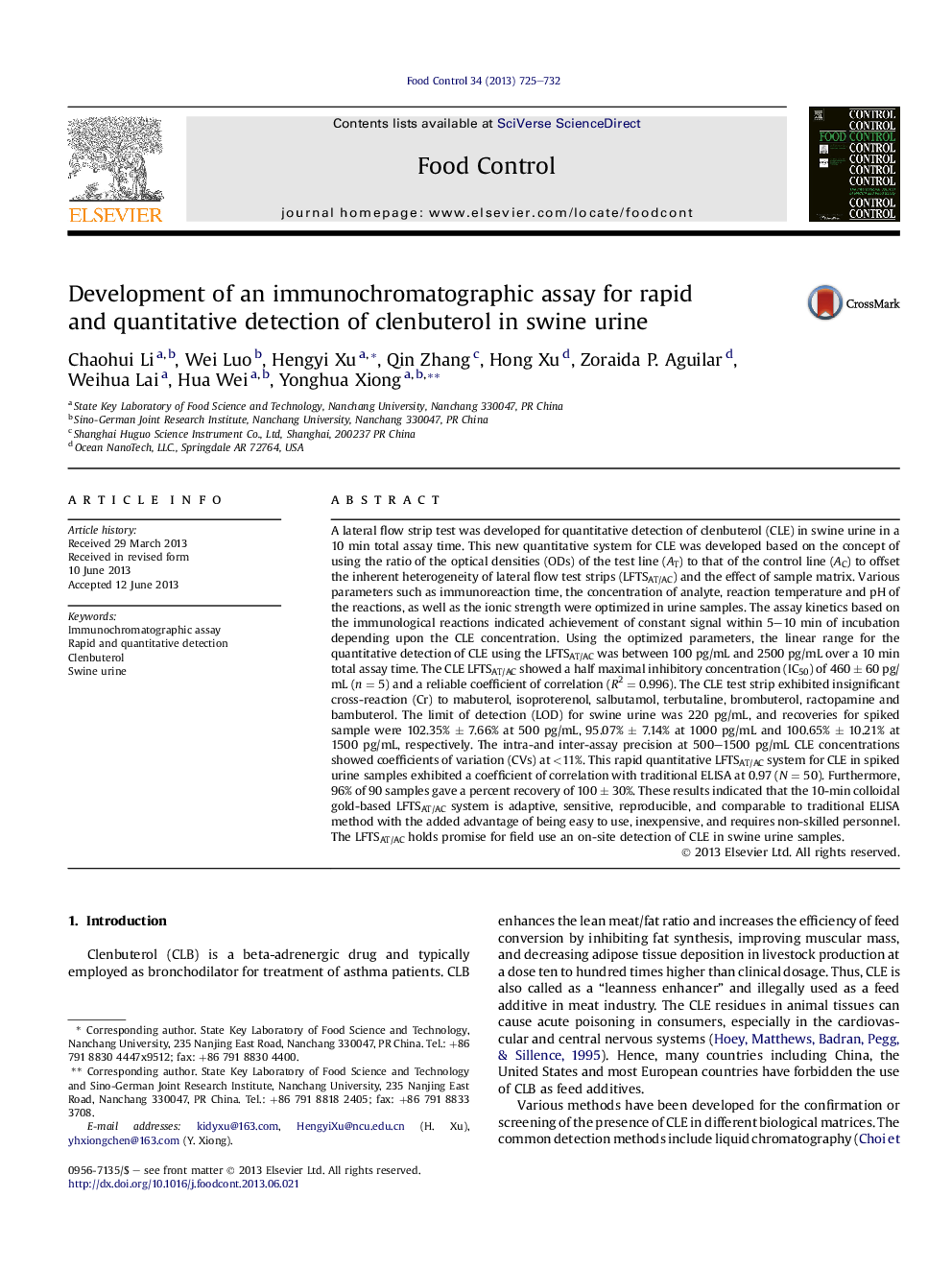| Article ID | Journal | Published Year | Pages | File Type |
|---|---|---|---|---|
| 6392435 | Food Control | 2013 | 8 Pages |
â¢Kinetics of test strip immunoreaction have been analyzed.â¢Immunochromatographic assay for rapid clenbuterol detection in swine urine.â¢Quantitative detection by using AT/AC model has been achieved.â¢Effects of different factors have been studied.
A lateral flow strip test was developed for quantitative detection of clenbuterol (CLE) in swine urine in a 10 min total assay time. This new quantitative system for CLE was developed based on the concept of using the ratio of the optical densities (ODs) of the test line (AT) to that of the control line (AC) to offset the inherent heterogeneity of lateral flow test strips (LFTSAT/AC) and the effect of sample matrix. Various parameters such as immunoreaction time, the concentration of analyte, reaction temperature and pH of the reactions, as well as the ionic strength were optimized in urine samples. The assay kinetics based on the immunological reactions indicated achievement of constant signal within 5-10 min of incubation depending upon the CLE concentration. Using the optimized parameters, the linear range for the quantitative detection of CLE using the LFTSAT/AC was between 100 pg/mL and 2500 pg/mL over a 10 min total assay time. The CLE LFTSAT/AC showed a half maximal inhibitory concentration (IC50) of 460 ± 60 pg/mL (n = 5) and a reliable coefficient of correlation (R2 = 0.996). The CLE test strip exhibited insignificant cross-reaction (Cr) to mabuterol, isoproterenol, salbutamol, terbutaline, brombuterol, ractopamine and bambuterol. The limit of detection (LOD) for swine urine was 220 pg/mL, and recoveries for spiked sample were 102.35% ± 7.66% at 500 pg/mL, 95.07% ± 7.14% at 1000 pg/mL and 100.65% ± 10.21% at 1500 pg/mL, respectively. The intra-and inter-assay precision at 500-1500 pg/mL CLE concentrations showed coefficients of variation (CVs) at <11%. This rapid quantitative LFTSAT/AC system for CLE in spiked urine samples exhibited a coefficient of correlation with traditional ELISA at 0.97 (N = 50). Furthermore, 96% of 90 samples gave a percent recovery of 100 ± 30%. These results indicated that the 10-min colloidal gold-based LFTSAT/AC system is adaptive, sensitive, reproducible, and comparable to traditional ELISA method with the added advantage of being easy to use, inexpensive, and requires non-skilled personnel. The LFTSAT/AC holds promise for field use an on-site detection of CLE in swine urine samples.
